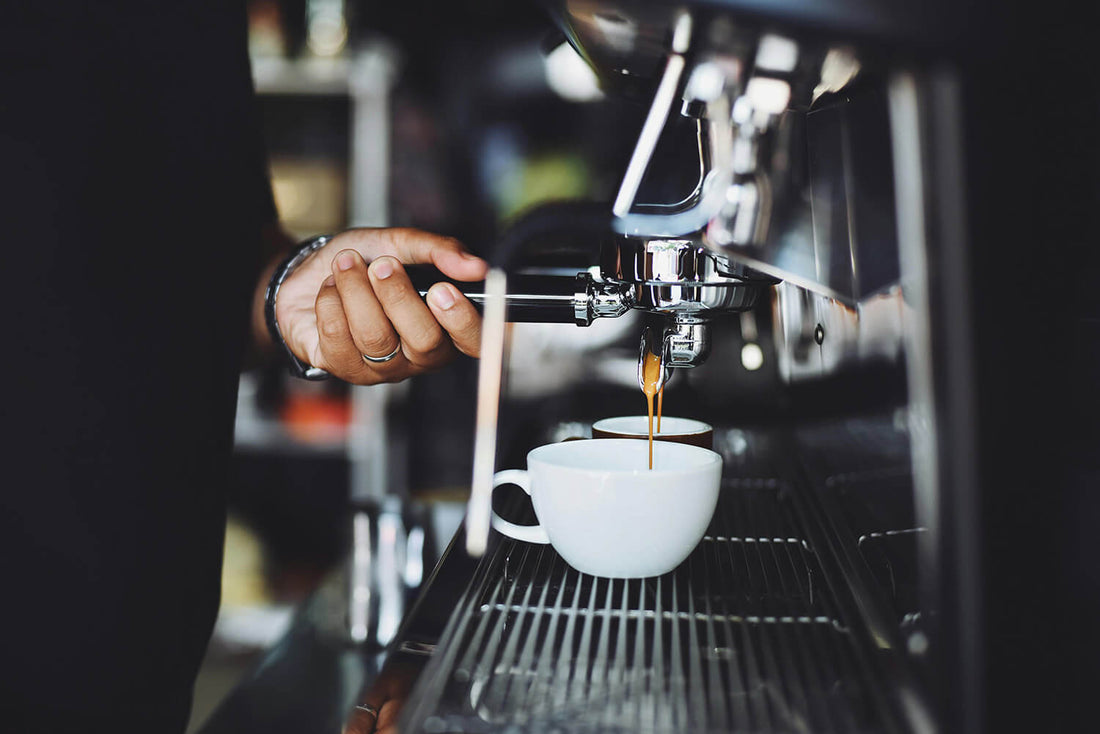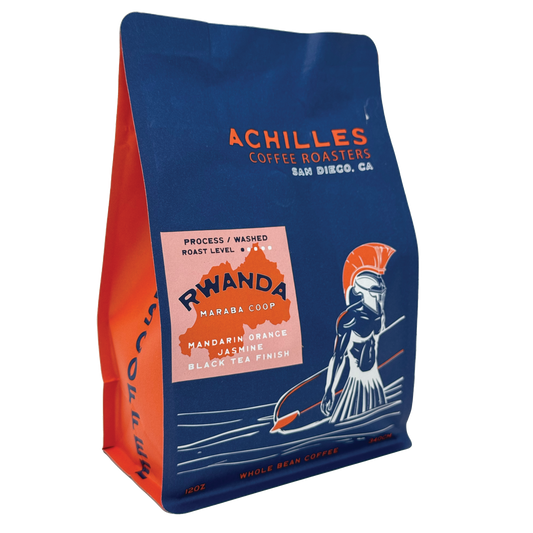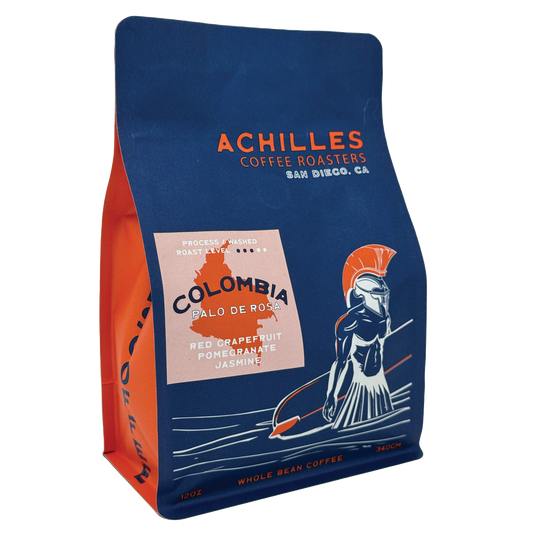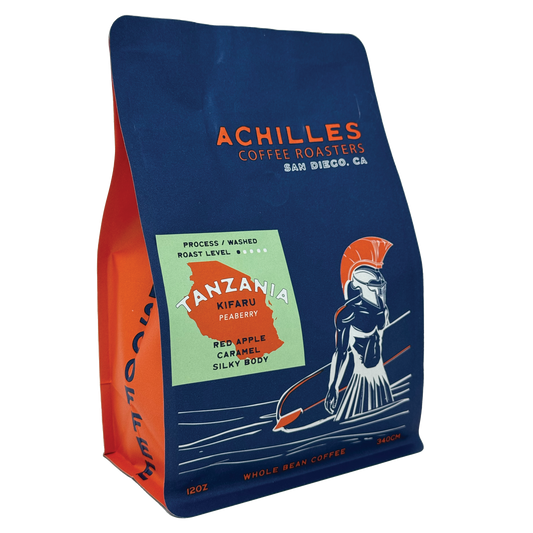Choosing a coffee you truly love isn’t just a matter of picking between “light roast” or “dark roast.” It’s about understanding your palate—the personal flavor preferences that shape what you enjoy in every sip. Just as some people instinctively reach for a bright Sauvignon Blanc while others prefer a velvety Merlot, or some crave the floral lift of green tea while others indulge in the richness of dark chocolate, your existing tastes already hold the clues to finding your perfect cup of coffee.
Every coffee bean tells a story, one that reflects its origin, altitude, processing, and roast profile. By tuning into what naturally appeals to you, you can match that story to your own preferences—whether you love lively, fruit-forward flavors or deep, comforting ones. The art of coffee appreciation isn’t just about caffeine; it’s about connection, discovery, and taste.
If you’re the kind of person who savors a fine glass of wine, appreciating the nuances between a crisp Chardonnay and an earthy Pinot Noir… or who lingers over a delicate cup of tea, noticing how floral notes differ from toasty ones… or who finds joy in the smooth intensity of dark chocolate, then you already have a strong foundation for understanding what makes coffee special. These same sensory instincts can help you navigate the diverse world of coffee beans with confidence.
In this guide, we’ll show you how to use your flavor preferences in wine, tea, and chocolate as a roadmap for discovering coffee that aligns perfectly with your palate. You’ll learn how to interpret tasting notes, understand how roast level, origin, and processing method shape flavor, and identify brewing styles that enhance the profiles you naturally gravitate toward. Whether you crave something bright and lively or rich and grounding, you’ll find that there’s a coffee crafted for every palate—and yours is waiting to be discovered.
Why Coffee Flavor Works Like Wine, Tea & Chocolate
Before diving into specific matches, it’s helpful to understand why coffee parallels the flavor worlds of wine, tea, and chocolate so naturally. All three share a foundation in agriculture, terroir, and craftsmanship—meaning that their flavors are shaped by the environments in which they grow and the methods used to process and prepare them. Like wine and tea, coffee is a product of place, time, and technique. Each bean carries a unique story of origin, climate, and care.
Just like wine, coffee is an agricultural product deeply influenced by its terroir—the soil, altitude, rainfall, and ecosystem where it’s grown. The same coffee variety can taste completely different depending on whether it’s cultivated in the volcanic soils of Guatemala or the highlands of Ethiopia. According to BrewVox, these environmental conditions, combined with varietal genetics and post-harvest processing, give coffee its vast spectrum of flavor—from crisp citrus brightness to jammy sweetness to earthy depth. Just as a sommelier describes a wine as having “tannic structure” or “stone-fruit acidity,” coffee professionals evaluate beans by similar sensory language—acidity, body, sweetness, balance, and finish.
As with tea, coffee can also express delicate, floral, and herbal characteristics when treated with precision during roasting and brewing. Lighter roasts preserve the bean’s natural aromatics—jasmine, bergamot, or chamomile-like qualities—that mirror the complexity found in fine teas. As Fellow notes, the roasting process is similar to how tea leaves are oxidized and dried to develop distinct flavor notes. Both drinks require control of temperature, timing, and exposure to bring out subtleties rather than overpower them. For those who love the serenity and elegance of tea, coffees with lighter roasts and washed processes can deliver that same clarity and refinement.
And like chocolate, coffee shares a deeply roasted, nutty, and cocoa-rich flavor family. The connection between cacao and coffee is more than metaphorical—both originate as seeds within fruit and undergo fermentation, drying, and roasting before becoming what we consume. According to Common Room Roasters, darker roasts or beans from regions such as Sumatra, Brazil, and Colombia often develop lush chocolate, molasses, and toasted-nut notes reminiscent of premium dark chocolate or caramelized confections. For those drawn to smooth, comforting richness, these flavors feel familiar and deeply satisfying.
In short, coffee occupies a beautiful intersection of flavor worlds. If you already know you’re drawn to certain profiles—black tea’s subtle astringency, an earthy Pinot Noir’s depth, or dark chocolate’s silky sweetness—you’re halfway to understanding your coffee palate. Those sensory preferences act as a roadmap: a way to navigate the enormous diversity of coffee with confidence and curiosity.
Once you learn to identify the qualities you love elsewhere, you can start matching coffee to your flavor family—and unlock cups that taste as if they were made just for you.
Matching Coffee by Flavor Preference
If you’ve ever felt lost choosing between hundreds of coffee varieties, this is where your existing taste preferences become your best guide. Whether you love the bright complexity of fine wine, the calming refinement of tea, or the decadent richness of chocolate, those same sensory instincts can help you choose the perfect coffee. Each flavor family points you toward specific origins, roast levels, and processing methods that will naturally align with your palate. Here’s how to translate your affinity for wine, tea, or chocolate into coffee choices that feel familiar, rewarding, and perfectly tailored to you.
If You Love Wine
Wine lovers are drawn to complexity — the layered interplay of acidity, aroma, and finish that makes every sip unique. You notice how a crisp Sauvignon Blanc carries citrus and minerality, while a structured Pinot Noir brings cherry, spice, and silkiness. Those same characteristics exist in certain coffees: lively acidity, juicy fruit notes, and a clean, elegant structure that unfolds sip by sip.
What to Look For:
-
Light to Medium Roasts: These retain clarity and brightness, much like a wine that expresses its terroir. Coffees from high-altitude regions such as Ethiopia or Kenya often deliver floral, citrus, or red-fruit notes that sparkle on the palate. According to BrewVox, altitude enhances bean density, which translates into vibrant acidity and intricate aromatics — traits prized by both wine and coffee connoisseurs.
-
Natural or Honey Processed Beans: These methods leave some of the coffee cherry’s fruit sugars on the bean during drying, creating a sweet, wine-like complexity reminiscent of a dessert wine or ripe berries. Fellow notes that natural and honey processes bring out flavors of blackberry, plum, or tropical fruit while maintaining velvety sweetness.
-
Single-Origin Coffees: Just as wine drinkers appreciate the nuance of terroir, single-origin coffees highlight a farm’s unique climate and soil, allowing you to taste the distinct signature of place.
How to Brew:
Use a pour-over method (such as a V60 or Chemex) to emphasize clarity and structure. Aim for a slightly higher brew temperature (200–205°F) and a moderate grind size. This highlights acidity and fruitiness while maintaining balance — the coffee equivalent of decanting a fine wine to let it breathe.
If You Love Tea
Tea drinkers tend to appreciate subtlety over intensity — flavor that unfolds quietly, with delicate transitions and lingering aroma. You might enjoy the floral lift of jasmine green tea, the honeyed smoothness of oolong, or the brisk energy of black tea. These preferences map perfectly to certain light-roast coffees that deliver floral, herbal, or tea-like clarity.
What to Look For:
-
Light Roast Coffees: Beans from Ethiopia’s Yirgacheffe or Panama’s Geisha varieties are known for their elegant, tea-like profiles. These coffees feature floral notes of jasmine and bergamot with a silky body that mirrors a fine Darjeeling or high-mountain oolong (Wikipedia).
-
Washed Process Coffees: A washed process removes the fruit pulp before drying, resulting in a clean, refined flavor that highlights brightness and clarity rather than heaviness. Fellow explains that this method emphasizes the coffee’s natural aromatics, much like carefully steeping loose-leaf tea at the perfect temperature.
-
Gentle Acidity and Light Body: Choose coffees described as “floral,” “delicate,” or “balanced.” You’re seeking finesse, not punch.
How to Brew:
Opt for a manual pour-over or Kalita Wave, using a fine-to-medium grind. Brew for about 2½ to 3 minutes with water around 195–200°F. Focus on aroma and flow — the goal is to extract slowly and evenly for a smooth, transparent cup. Let your senses engage, just as they do when steeping your favorite tea leaves.
If You Love Chocolate
Chocolate enthusiasts tend to crave richness, depth, and comfort — flavors that feel indulgent, layered, and satisfying. If you find joy in the silky bitterness of dark chocolate, the caramel sweetness of milk chocolate, or the nuttiness of praline, then coffee’s deeper, roasted profiles will feel instantly familiar.
What to Look For:
-
Medium to Dark Roasts: These emphasize caramelization, turning natural sugars into cocoa-like depth. Beans from Latin America — particularly Guatemala, Colombia, and Brazil — often feature nutty, chocolate, and toffee notes. Common Room Roasters highlights that darker roasts from these origins deliver velvety body and a warm, dessert-like finish.
-
Beans Described as Cocoa, Molasses, or Toasted Nuts: Flavor descriptors like “chocolate,” “baker’s cocoa,” or “caramelized sugar” signal roasts with comfort and sweetness at their core.
-
Full Body, Low Acidity: Look for words like “smooth,” “bold,” and “rounded.” These coffees trade sharp acidity for balance and warmth — ideal for those who prefer richness over brightness.
Recommended Beans:
-
Colombia Antioquia Single Origin Coffee: This coffee features Excelso beans, known for their large size. Excelso beans are sized at screens 15-16 and make up the majority of Colombia’s exports, while Supremo beans are even larger. Both can come from the same tree, as they are sorted by size after processing.
How to Brew:
Brew using a French press or espresso machine to emphasize texture and depth. For French press, use a coarse grind and a 4–5 minute steep. For espresso, use a fine grind and pull a shot around 200–205°F. Either way, you’ll highlight the syrupy mouthfeel and chocolatey intensity. Add steamed milk for a mocha-like finish or enjoy black for pure richness.
Coffee, like wine, tea, and chocolate, reflects both nature and craft — a sensory spectrum waiting to be explored. By tuning into what you already love, you turn coffee selection from guesswork into discovery. Whether your tastes lean toward fruit and acidity, florals and finesse, or richness and comfort, there’s a bean—and a brew—crafted precisely for your palate.
Additional Considerations for Deep Enjoyment
The beauty of coffee lies in its complexity — every variable, from roast date to brewing method, shapes what ends up in your cup. Once you’ve identified your flavor preferences, a few key details can elevate your experience from “good coffee” to something truly memorable.
Freshness Matters
Coffee is a fresh food, not a shelf-stable commodity. Once roasted, coffee beans begin to lose their aromatic compounds through oxidation, releasing volatile oils and gases that carry most of the flavor. According to Fellow, those oils begin to degrade within weeks of roasting, meaning your cup’s sweetness, aroma, and clarity fade over time.
For the best flavor, choose beans roasted within the last two to four weeks. Always look for a printed roast date rather than a “best by” label — it’s a more honest indicator of freshness. Store your beans in an airtight, opaque container away from light, heat, and moisture. Avoid the fridge or freezer; condensation can damage the beans and accelerate staleness.
If you’ve ever wondered why café coffee tastes livelier than what you brew at home, freshness is often the missing link. Fresh beans make brighter, more aromatic coffee — a simple adjustment that transforms your ritual.
Processing and Origin Matter
Not all coffee is processed the same way, and the method used after harvest has a profound impact on flavor. As Bean & Bean Coffee Roasters explains, coffee’s “processing” refers to how the fruit surrounding the bean is removed and dried.
-
Natural (Dry) Process: The whole cherry dries intact before hulling. This method produces fruit-forward, wine-like coffees with pronounced sweetness and complexity. Think ripe berries, stone fruit, and jammy intensity.
-
Honey Process: The skin is removed but some sticky mucilage remains, creating a hybrid result — sweet and syrupy, yet clean. These coffees often display balanced fruit character with smooth texture.
-
Washed (Wet) Process: The fruit pulp is fully removed before drying, producing bright, clean cups with tea-like clarity and refined acidity.
Just like grapes or tea leaves, coffee’s origin—the country, region, and even the altitude—plays a defining role. East African coffees like Ethiopia and Kenya tend to sparkle with citrus and floral notes, Central American beans (Guatemala, Costa Rica, Honduras) lean toward nutty sweetness, and Indonesian origins (Sumatra, Java) offer earthy, chocolate-rich depth.
Roast Level Is a Tool, Not the Story
It’s a common misconception that light roasts are weak or that dark roasts are automatically stronger. The truth is more nuanced. Roast level is simply a tool used to highlight different aspects of the bean. As Fellow emphasizes, flavor should always be measured by balance and character — not darkness or color.
-
Light roasts preserve the bean’s origin traits — fruit, florals, and bright acidity. They’re complex and dynamic, often compared to wine or tea.
-
Medium roasts strike harmony between brightness and body, offering caramel sweetness and approachability.
-
Dark roasts emphasize richness and roast flavor — chocolate, spice, smoke — trading nuance for boldness.
Neither is “better.” What matters most is how the roast aligns with your personal palate. Do you prefer vibrant and tangy? Smooth and nutty? Rich and smoky? Your preference defines the perfect roast, not the other way around.
Brewing Method Influences the Final Cup
The same coffee bean can taste completely different depending on how you brew it. Brewing isn’t just about convenience — it’s an art form that highlights different aspects of flavor and texture.
-
Pour-over (V60, Chemex): Accentuates clarity, brightness, and delicate aromas. Ideal for floral or fruity coffees.
-
French press: Produces a heavier body and smooth mouthfeel, emphasizing richness and chocolatey depth.
-
Espresso: Concentrates flavor and intensity, revealing deep caramel and toasted notes.
-
Cold brew: Smooths acidity and enhances sweetness, producing a mellow, refreshing result.
Match your brew method to your flavor goal. Want something crisp and lively? Pour-over. Need comfort and body? French press. Craving intensity? Espresso.
Explore Deliberately
One of the joys of coffee is discovery. Treat it as an ongoing conversation between your senses and your curiosity. Roast one bean two different ways; brew the same coffee using different methods; taste side by side. You’ll start to notice patterns — which origins feel bright versus earthy, which roasts sing on your palate, and how grind size and temperature shift flavor.
Over time, you’ll develop a personal flavor map: a mental library of what you love and why. It’s the same journey wine drinkers take when learning varietals or chocolate lovers when tasting cacao origins.
The key is to explore deliberately. Pay attention, take notes, and trust your taste. Coffee is infinitely varied, but the more you engage with it, the clearer your preferences become — and every cup brings you closer to mastery.
Why This Matters for Coffee-Lovers and Roasters
For roasters, café owners, and baristas, framing coffee through the lens of wine, tea, and chocolate preferences is more than a clever sales tactic — it’s a transformative way to educate and connect with customers. Most casual coffee drinkers don’t think in terms of origin or processing methods; they think in terms of taste experiences they already understand. When you ask a customer, “Do you prefer the brightness of wine, the delicacy of tea, or the richness of chocolate?” you instantly translate the complex world of coffee into familiar sensory language.
This approach bridges the gap between expertise and accessibility. Instead of overwhelming customers with jargon like “washed Ethiopian” or “natural-process Costa Rican,” you’re guiding them through relatable flavor territories. Someone who loves crisp white wine might light up at the mention of a bright, citrusy Ethiopian single origin, while a fan of dark chocolate could be drawn toward a Sumatra or Guatemalan dark roast with cocoa depth and velvety texture. The conversation shifts from transactional to experiential, helping guests feel seen, understood, and valued.
In a café environment, this method builds trust and loyalty. Customers don’t just walk away with a great cup — they leave feeling like they’ve learned something about themselves. They begin to connect their own preferences to the coffee world, and that emotional connection keeps them coming back. For a roaster, it also elevates brand storytelling. Coffee becomes less about product specs and more about personality, mood, and identity — a reflection of taste rather than just habit.
For the individual drinker, this framework removes all the guesswork from what can otherwise feel like an intimidating landscape. Instead of randomly buying bags and hoping to find “the one,” you can explore coffee with intention. You’re no longer chasing hype or labels — you’re curating your experience based on what you already know you enjoy.
By recognizing the parallels between coffee and your favorite sensory indulgences — the acidity of a Sauvignon Blanc, the smooth elegance of an oolong tea, the creamy intensity of dark chocolate — you gain the tools to make informed choices and craft a personal coffee journey. You start to understand why certain origins excite you, why certain brewing methods feel comforting, and why one roast might resonate more than another.
Ultimately, this approach turns coffee from a daily habit into a flavor-rich craft. It invites you to slow down, taste mindfully, and celebrate nuance. It transforms you from a passive consumer into an active participant — someone who drinks coffee not just for energy, but for artistry, connection, and discovery.
For both professionals and enthusiasts, that’s where the real magic of coffee lives: not in caffeine, but in curiosity.
Final Thoughts
Coffee is as diverse and expressive as fine wine, delicate as tea and comforting as chocolate. By tuning into what you already know you like—whether that’s a crisp white wine, a fragrant tea or a smooth bit of dark chocolate—you unlock a pathway to beans that suit your palate.
Start by identifying one flavour family you love, pick beans that align, brew it in a way that highlights that character—and then savor the experience. Over time you’ll build a coffee library tailored to you: one bag for clarity and fruit, one for richness and comfort, one for aroma and subtlety.
And remember: the perfect cup isn’t just the one with the highest price tag or “trendiest” origin—it’s the one that speaks your palate. So whether you lean wine-bright, tea-gentle or chocolate-deep, there’s a bean out there with your name on it.








